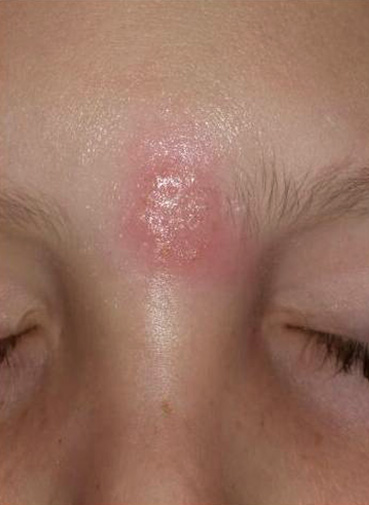Frontal herpes zoster in an immunocompetent partially vaccinated child

Downloads
DOI:
https://doi.org/10.26326/2281-9649.27.3.1474How to Cite
Abstract
Herpes zoster is an uncommon viral infection in children, and cephalic presentation is extremely rare. Although it can occur in patients of any age who have had a previous infection with varicella zoster virus (VZV), it is mostly reported in immunocompromised patients or in cases of varicella infection acquired intrauterine or during the first year of life (3). Initial exposure to the VZV may be from a wild-type or vaccine-related strain (1). Some studies have shown a significantly higher risk of herpes zoster in children with varicella infection than in vaccinated children without a history of varicella (4). One factor that seems to increase the risk of herpes zoster after VVZ vaccination is the development of a rash after its administration, being the relative risk of developing a herpes zoster 5.75 times greater in these children (2). The most common schedule of vaccination comprises a first dose at 12-18 months followed by a second dose at between four and six years of age (5). This second dose is unnecessary if the child develops a varicella before it.
Herpes zoster has obviously been reported previously in the literature in our same conditions, but we have not found this peculiar presentation mimicking an herpes simplex infection in an immunocompetent child.
